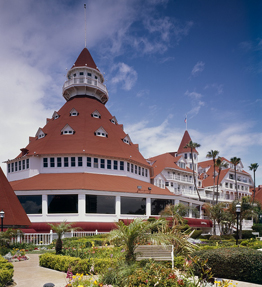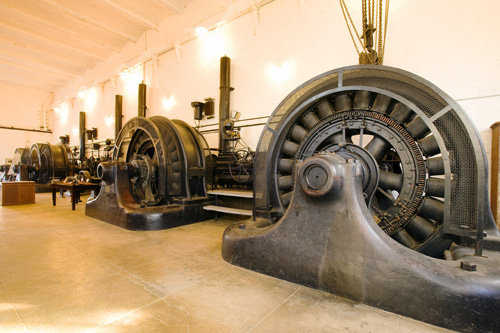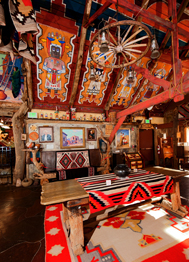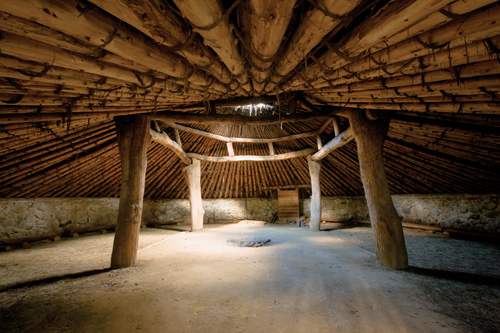Del Coronado Hotel
 Completed in 1888, Hotel del Coronado is one of the few surviving examples of the Victorian beach resort. Designed by architects James and Merritt Reid, the hotel was the largest resort in the world at the time of its construction. Hotel del Coronado was designated a California Historic Landmark in 1970, placed on the National Register in 1971, and designated a National Historic Landmark in 1977.
Completed in 1888, Hotel del Coronado is one of the few surviving examples of the Victorian beach resort. Designed by architects James and Merritt Reid, the hotel was the largest resort in the world at the time of its construction. Hotel del Coronado was designated a California Historic Landmark in 1970, placed on the National Register in 1971, and designated a National Historic Landmark in 1977.
(Photo from the Carol M. Highsmith Archive, Library of Congress, Prints and Photographs Division.)
For more information, see Hotel del Coronado.
Folsom Powerhouse State Historic Park

The Folsom Powerhouse began operations in July 1895 and delivered power to Sacramento at 11,000 volts, a new achievement in long-distance high-voltage transmission. The original generating plant remained in continuous operations until 1952 and is now a state historic park. The Folsom Powerhouse is California Historical Landmark #633 and was designated a National Historic Landmark in 1981.
For more information, see Folsom Powerhouse.
Antelope Valley Indian Museum State Historic Park
 The Antelope Valley Indian Museum was originally constructed by homesteader/artist H. Arden Edwards in 1928. The chalet-style structure was built over an entire rock formation of Piute Butte in the Mojave Desert. The exhibits and interpretive emphasis of the museum are on American Indian groups (both aboriginal and contemporary) of the Southwest, Great Basin, and California culture regions, since Antelope Valley was a major prehistoric trade route linking all three of these regions.
The Antelope Valley Indian Museum was originally constructed by homesteader/artist H. Arden Edwards in 1928. The chalet-style structure was built over an entire rock formation of Piute Butte in the Mojave Desert. The exhibits and interpretive emphasis of the museum are on American Indian groups (both aboriginal and contemporary) of the Southwest, Great Basin, and California culture regions, since Antelope Valley was a major prehistoric trade route linking all three of these regions.
For more information, visit the Antelope Valley Indian Museum
Roundhouse at Indian Grinding Rock State Historic Park
 The reconstructed roundhouse at Indian Grinding Rock State Historic Park, Amador County, is used today for dances and ceremonies throughout the year. At 60 feet in diameter, it is one of the largest roundhouses in existence. When it is not being used by Native American groups, it is open to the public.
The reconstructed roundhouse at Indian Grinding Rock State Historic Park, Amador County, is used today for dances and ceremonies throughout the year. At 60 feet in diameter, it is one of the largest roundhouses in existence. When it is not being used by Native American groups, it is open to the public.
For more information, visit Indian Grinding Rock State Historic Park.
Shasta State Historic Park

Once a bustling picturesque California gold rush town and known as the “Queen City of the Northern Mines,” the town of Shasta slipped into a ruinous state after the county seat moved from Shasta to Redding in 1888. During the 1920s, several groups recognized Shasta’s historical significance and began preserving the “boom to bust” mining town. In 1950, the Courthouse museum of Shasta opened its doors to visitors and has since become a state historic park.
For more information, visit Shasta State Historic Park.
